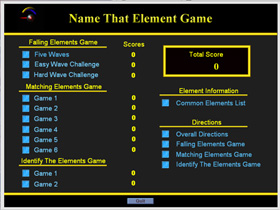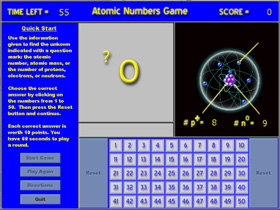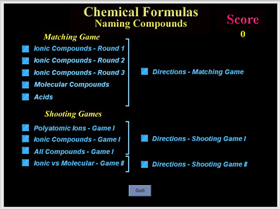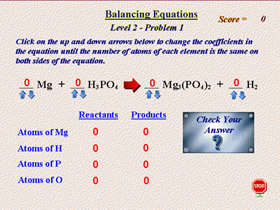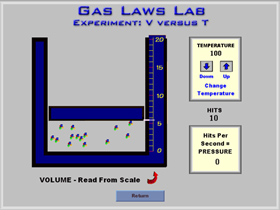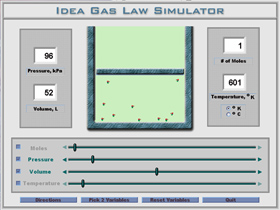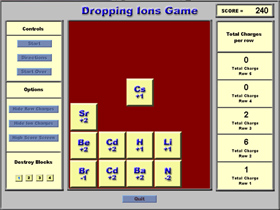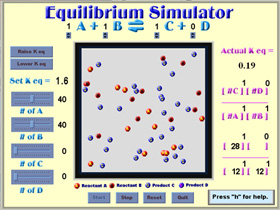 |
|
|
Science
Software By Science Teachers For Science Teachers
|
||||
|
|
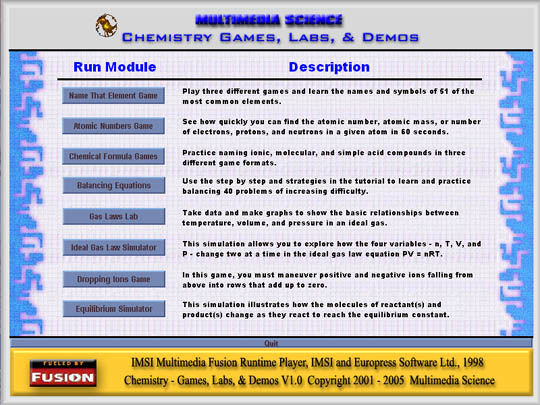 |
|
|
|
A set of tutorials, labs, demonstrations, and games on basic chemistry topics. A screen shot and description of each multimedia module is given below. |
||
|
|
Click
on the pictures to see a larger version in a pop up window. |
|||
| Name
That Element Game In the Name That Element Game, students play three games designed to help them learn the 51 most common element names and symbols. In the falling elements game, they must shoot the correct symbol that matches the given name. In the matching elements game, they must match the symbols to the correct name. And in the identify the elements game, they must match up a list of element names with a list of interesting and unusual information about those elements. |
|||
| Atomic
Numbers Game In the Atomic Numbers Game, students are given some information and must find either the atomic number, the atomic mass, or the number of electrons, protons, or neutrons. They are given 60 seconds for each round to do so. |
|||
| Chemical
Formula Games Students can practice naming chemical formulas in two game formats. The first format is a matching game where students must match the name with the correct formula. The second format is a shooting game where students are given the name and must shoot the correct formula. The final shooting game requires the students to shoot only the ionic and not the molecular compounds. This module covers naming of basic ionic, molecular, and simple acids. |
|||
| Balancing
Equations This tutorial includes a brief history of the conservation of mass, step by step instructions and strategies on balancing equations, and a set of 40 problems (in four sets of ten) of increasing difficulty. A score is kept for each of the four sets of problems. |
|||
|
Gas
Laws Lab Students see and hear clearly the correlation between pressure and the collisions of the gas molecules against the sides of the container. |
|||
|
Ideal
Gas Law Simulator A box with a movable top contains bouncing molecules which illustrates the changes to the four variables. As the volume changes, the top moves up and down. As the temperature changes, molecules in the box move faster and slower. As the number of moles,n, changes, the number of molecules bouncing in the box increases or decreases. |
|||
|
Dropping
Ions Game Before the game starts, students can choose to have the total charge of each row shown and / or have the charge of each ion shown. If they do either, however, they cannot add their names to the list of high scores. They also can destroy up to four of the ion blocks to help achieve the goal. |
|||
| Equilibrium
Simulator The equilibrium simulator lets you choose the coefficients in the chemical equation: A + B = C + D Then you can add molecules of A, B, C, and D to the reaction chamber and set the desired equilibrium constant. When the simulation is started, the reaction will proceed, indicating how the numbers of each reactant and product are changing and moving towards the equilibrium constant. |
|||
|
|
|
|
